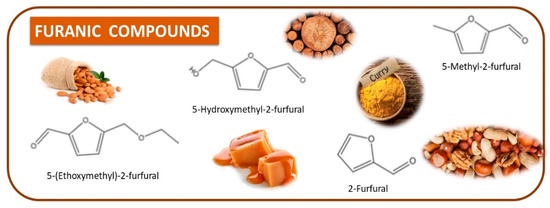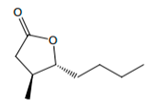The chemical fingerprint of fortified wines is very complex and fascinating, being constituted by several hundred volatile and non-volatile chemical groups, such as terpenoids, pyrazines, esters, alcohols, acids, furanic compounds, phenolic compounds, and organic acids, among others. These chemical groups were present in fortified wines at different volatilities, polarities, and concentration ranges, from a few ng/L to mg/L. However, the quality of wine also depends on several parameters, such as grape variety, vineyard location, terroir, and vinification conditions (e.g., fermentation, ageing), among others.
1. Portuguese Fortified Wines
Fortified Portuguese wines, such as Porto and Madeira, are known for their distinctive flavours and aromas, which are the result of a unique winemaking process that includes
estufagem and oxidation. The aromatic complexity of Portuguese fortified wines has been extensively studied [
3,
28,
42,
43,
44,
45,
46,
47,
48,
49,
50,
51,
52,
53,
54], and the most recent and important achievement achieved in these studies will be reported. During the ageing process, significant changes in the volatilomic profile of fortified wines occur due to the formation of new VOMs and the breakdown of existing ones. During the early stages of ageing, the wine develops fruity and floral characteristics, including VOMs belonging to esters and terpenoid chemical families. As the wine ages, these fruity and floral odours give way to more complex and intense odours, such as those linked with almond, caramel, nutty, curry, wood, and spice odours, as shown in
Figure 4.
Figure 4. The chemical structures and odour descriptors of the most important furanic compounds found in Madeira wines.
Pereira et al. [
53] observed that accelerated ageing promotes the development of VOMs, such as phenylacetaldehyde, β-damascenone, and 5-(ethoxymehtyl-2-furfural), whereas other VOMs responsible for floral and fruits odours (e.g., α-terpeniol, linalool) of some Madeira wines disappears of the thermal process. Perestrelo et al. [
46] observed that storage conditions promote the overall aroma of Madeira wines, as 14 VOMs appear during the storage as a result of the Maillard reaction, Strecker degradation caramelization, and microbial activity. Moreover, these VOMs contribute significantly to Madeira wine aroma complexity in relation to caramel, dried fruit, wood, spice, and toast. The aroma pattern of Madeira wines was established by Campo et al. [
55], using gas chromatography–olfactometry (GC–O), and the results obtained showed that Madeira wines lack the most crucial varietal aromas (e.g., linalool, methoxypyrazines), but they are rich in wood released aroma (e.g., sotolon, phenylacetaldehyde). Silva et al. [
49] studied the influence of forced ageing on Madeira wine using GC–O, and several Maillard byproducts were detected, namely, 2-furfural, 5-methyl-2-furfural, methional, sotolon, and phenylacetaldehyde. Perhaps 2-furfural and 5-methyl-2-furfural are quantitatively significant in Madeira wines, but no contribution to the overall aromas was verified due to their high odour thresholds (OTs). On the other hand, sotolon was reported as a key odorant of aged wines due to its high concentration and low OT (few µg/L) [
42,
55].
Other important odorants of Madeira wines aged in oak casks were butyrolactone, pantolactone, and
cis- and
trans-whisky lactone. In Port wines, β-damascenone, β-ciclocitral, β-ionone, branched aldehydes, and 2-alkenals isomers were found to be responsible for their aromatic complexity [
48,
56]. Moreover, it has also been reported that sotolon is one of the most significant odorants in Port wines. In another study, it was observed that older, when compared to younger, Port wines showed a lower content of sulphur compounds responsible for cauliflower, butter, and French bean odours [
28]. The unique characteristics of Portuguese fortified wine ageing contribute to the wine’s complexity and richness, making it a sought-after and prized beverage among wine enthusiasts (
Table 1).
Table 1. The most important aromatic compounds found in Madeira and Porto wines and their respective odour descriptor and threshold (OT) [
48,
53,
56].
2. Spanish Fortified Wines
Acetaldehyde has been reported as a crucial component of Sherry wines [
57] and is associated with the pungent odours typical of Fino wine [
58]. This VOM is a precursor of a diversity of VOMs involved in Sherry aromas, such as acetoin (buttery odours), 1,1-diethoxyethano (green fruit and liquorice odours), and sotolon (nutty, curry, and candy cotton odour). From the VOMs released from wood, special attention was given to sotolon lactone, which is responsible for the nutty odours of Sherry wines, and its concentration increased significantly during oxidative aging [
59]. 1,1-Diethoxyethane, and
Z-whisky lactone have also been proposed as potential biological ageing markers, since their concentrations increase with the ageing period [
60]. Moreover, several studies have been conducted to evaluate the effect of different woods (e.g., wood type, the origin of the wood) on the volatilomic composition and organoleptic properties of these fortified wines [
61,
62,
63]. According to Simón et al. [
64], Spanish oak is suitable to age red wine, as it provides intermediate or similar organoleptic features to French and American oaks. Moreover, the concentration of hexyl acetate, ethyl pentanoate, and ethyl octanoate responsive to fruity and floral notes of aged Spanish wines decreased with ageing, except for the wines aged in French oak casks, where their concentrations, along with other VOMs, such as isoamyl acetate and isobutyl acetate, increased during ageing [
62].
The aromatic complexity of Sherry wines, mainly Fino wines, has been extensively studied [
57,
60,
65,
66,
67,
68,
69,
70,
71]. Acetoin is a VOM with aromatic significance in Sherry wines responsible for the bitter odours of Fino wines. The reduction in the acetoin originates 2,3-butanediol, another VOM involved in the aroma of Sherry wines [
57]. Zea et al. [
67] studied the influence of flor yeasts and wood on the aroma profile of Fino wines subjected to biological ageing. The data obtained showed that fruity, fatty, and spicy odours were strongly correlated to the aroma profile of Fino wines subjected to biological ageing, whereas chemical, floral, balsamic, and vegetable showed a poor correlation. The authors observed that the fruity (e.g., acetaldehyde, ethyl octanoate, ethyl acetate, sotolon, 1,1-diethoxyethane), spicy (e.g., eugenol, sotolon, Z-oak lactone, 4-ethylguaiacol), and fatty series were the ones most strongly contributing to the aroma profile of Fino wines under biological ageing, while the chemical, balsamic, vegetable, empyreumatic, and floral series, in combination, contributed in low proportions. On the other hand, fruit odours were poor in Amontillado wines due to a lower concentration of 1,1-diethoxyethane and ethyl butanoate. Fino and Oloroso wines can be distinguished from Amontillado wines through 1,1-diethoxyethane, isobutanol, phenethyl alcohol, ethyl butanoate, ethyl benzoate, isobutyl isobutanoate, isoamyl laurate, and E-nerolidol [
65]. This implies that their origin may be connected to the oxidative ageing process that characterizes Oloroso wine, and for this reason, they are not present in the volatilomic profile of Amontillado wines, which undergo a subsequent oxidative ageing procedure after the first biological ageing step. β-citronellol and β-ionone are other VOMs with a significant impact on the aromatic profile of aged Sherry wines, and their presence is responsible for citrus and balsamic notes, even at low concentrations (few µg/L) [
66,
67,
68].
3. Italian Fortified Wines
Italian fortified wines are a varied group of wines that comprise various styles, each with its own distinctive flavour and aroma profile. The volatilomic profile composition of Italian fortified wines can be affected by several factors, such as the grape variety, the winemaking, and the ageing process used. Some of the most well known Italian fortified wines include Marsala and Vernaccia di Oristano liquoroso. However, the literature data related to the volatilomic profile and odorant impacts of Italian fortified wines is very limited. Dugo et al. [
72] used two-dimensional gas chromatography, coupled with time-of-flight mass spectrometry (GC × GC–TOFMS), to elucidate the volatilomic profile of four Marsala wines with different ageing characteristics (“fine”, “superiore secco”, “superiore riserva”, and “vergine”). A total of 128 VOMs were identified, belonging mainly to esters, alcohols, ketones, and aldehydes. The volatilomic profile of Marsala includes VOMs, such as acetaldehyde, ethyl acetate, ethyl hexanoate, and furfural, which give rise to fruity and nutty odours. Moreover, an attenuated total reflectance Fourier transform infrared (FTIR-ATR) method, in tandem with multivariate analysis of specific spectral areas of the sample, was developed by Condurso et al. [
34] to characterize the different categories of Marsala wines based on production technology, ageing, and sugar concentration.
On the other hand, Petretto, Urgeghe, Cabizza, and Del Caro [
35] investigated the volatile profile of the Sherry-like white wine Vernaccia di Oristano from Sardinia. The data obtained determined by solid-phase microextraction (SPME), followed by gas chromatography coupled with a mass spectrometer (GC/MS), using a targeted and untargeted approach, have allowed the identification of fifty-nine volatile compounds, among which ethyl acetate, amyl/iso-amyl alcohol, ethyl octanoate, benzaldehyde, ethyl decanoate, and phenylethyl alcohol were predominant. The untargeted approach was able to discriminate wines according to their production area and the year of production. As previously described, during the ageing in the barrels, this wine is subjected to a controlled oxidation induced by the formation of a flor velum on the wine surface [
38]. When the sugars and nitrogen compounds are depleted, the flor yeasts shift their fermentative metabolism to oxidative, generating several volatile compounds. This oxidative style gives the wine its distinct character, reminiscent of fortified wines, such as Sherry. It is known for its nutty, dried fruit, and caramelized flavours, with hints of spice and a pronounced tanginess.
Regarding the Malvasia delle Lipari wines, the aroma and oral perception profiles of dry apricot, raisin, caramel, and spicy were associated with several volatile organic compounds compared to the same wines obtained with two different yeasts. Among the 43 volatile components found by Muratore et al. [
73], ɣ-butyric lactone, α-terpineol, isoamyl alcohols, 2,3-butanediol, and phenyl ethanol were responsive to these perceptions defined using a trained panel of 36 judges. The same authors assigned a role of primary importance to the yeast strain used to carry out fermentation as a biological control of volatile acidity and aroma. Moreover, among the compounds formed after the refining of Malvasia delle Lipari, furanic derivatives, such as 5-hydroxymethylfurfural and 2-furaldehyde, generated due the hexose and pentose sugar degradation, are involved in the aroma of the Sicilian sweet and fortified wine [
41]. In addition, Italian fortified wines can contain a wide range of other VOMs, depending on the specific wine and the winemaking techniques used. Factors, such as the ageing period, type of oak barrel, and storage conditions, can contribute significantly to the volatilomic profile of Italian fortified wines.
This entry is adapted from the peer-reviewed paper 10.3390/foods12132558













